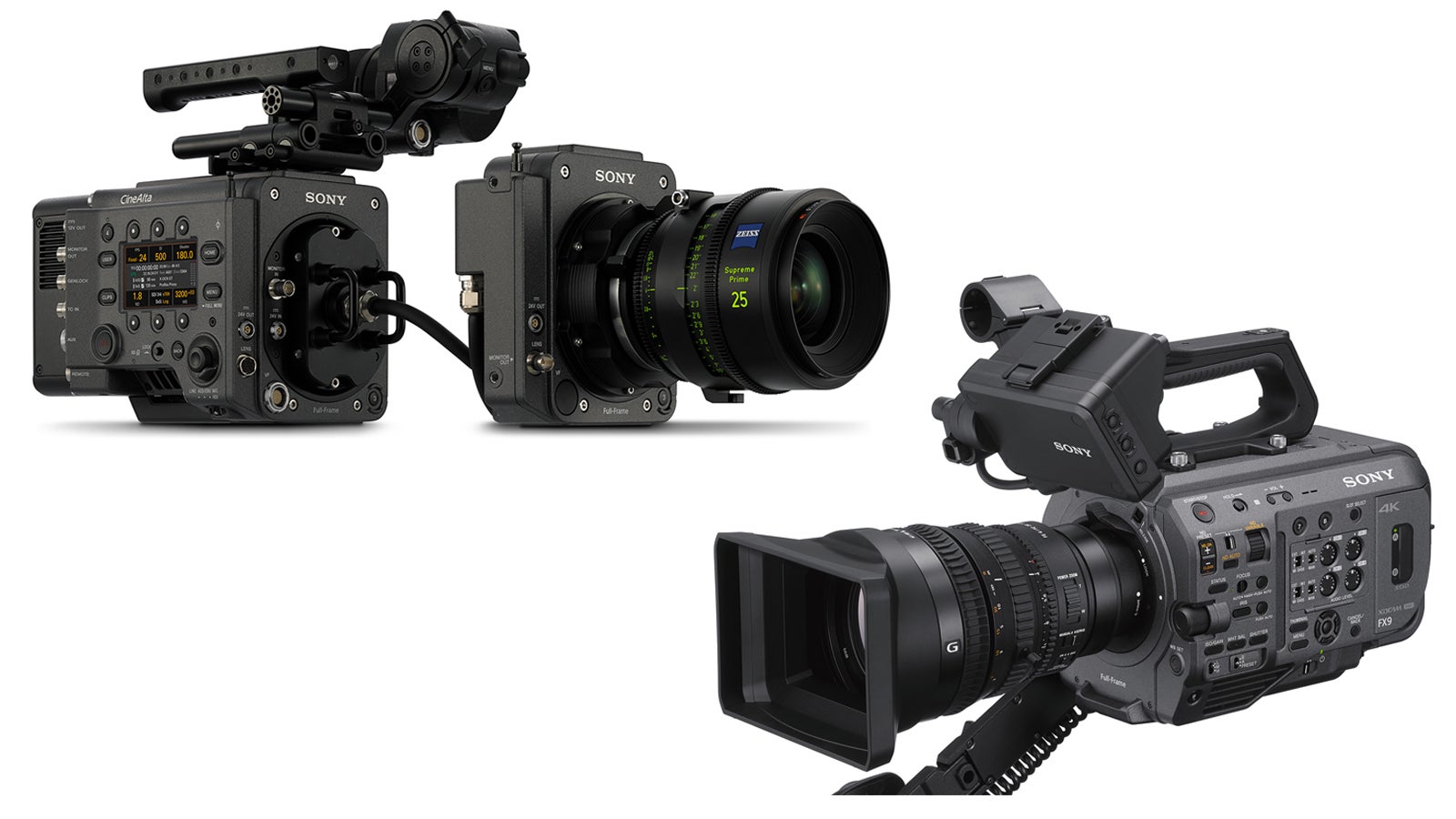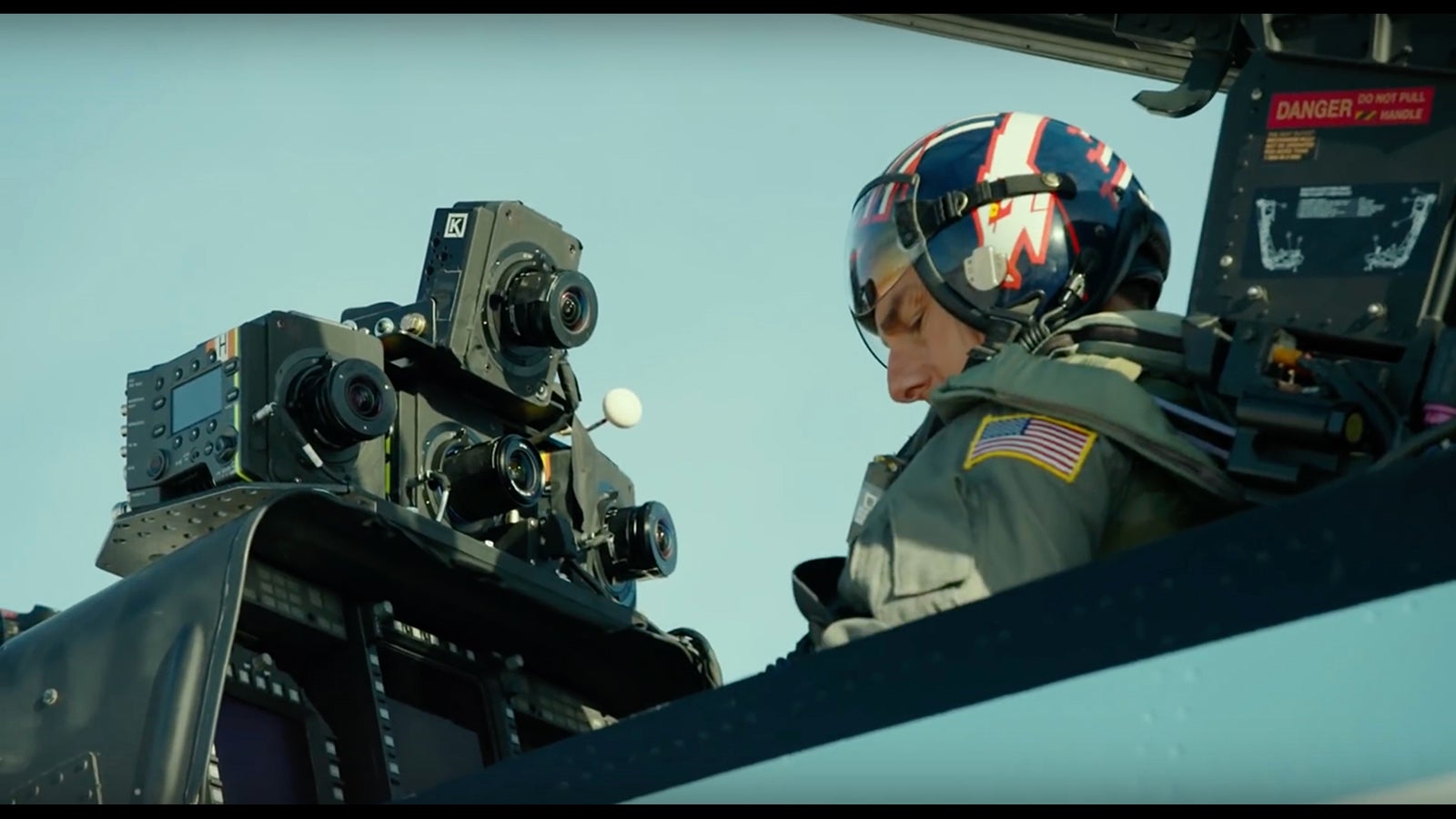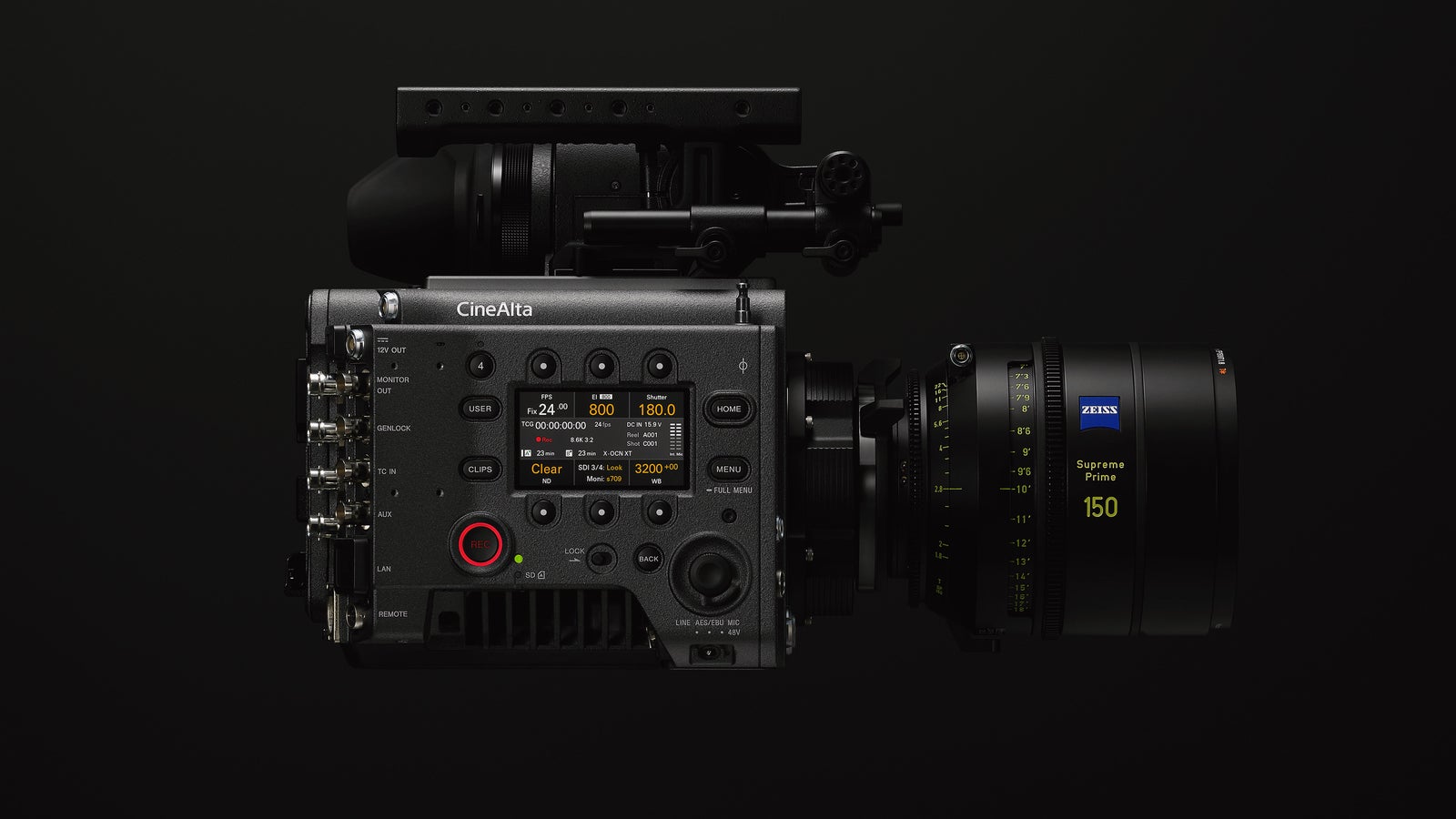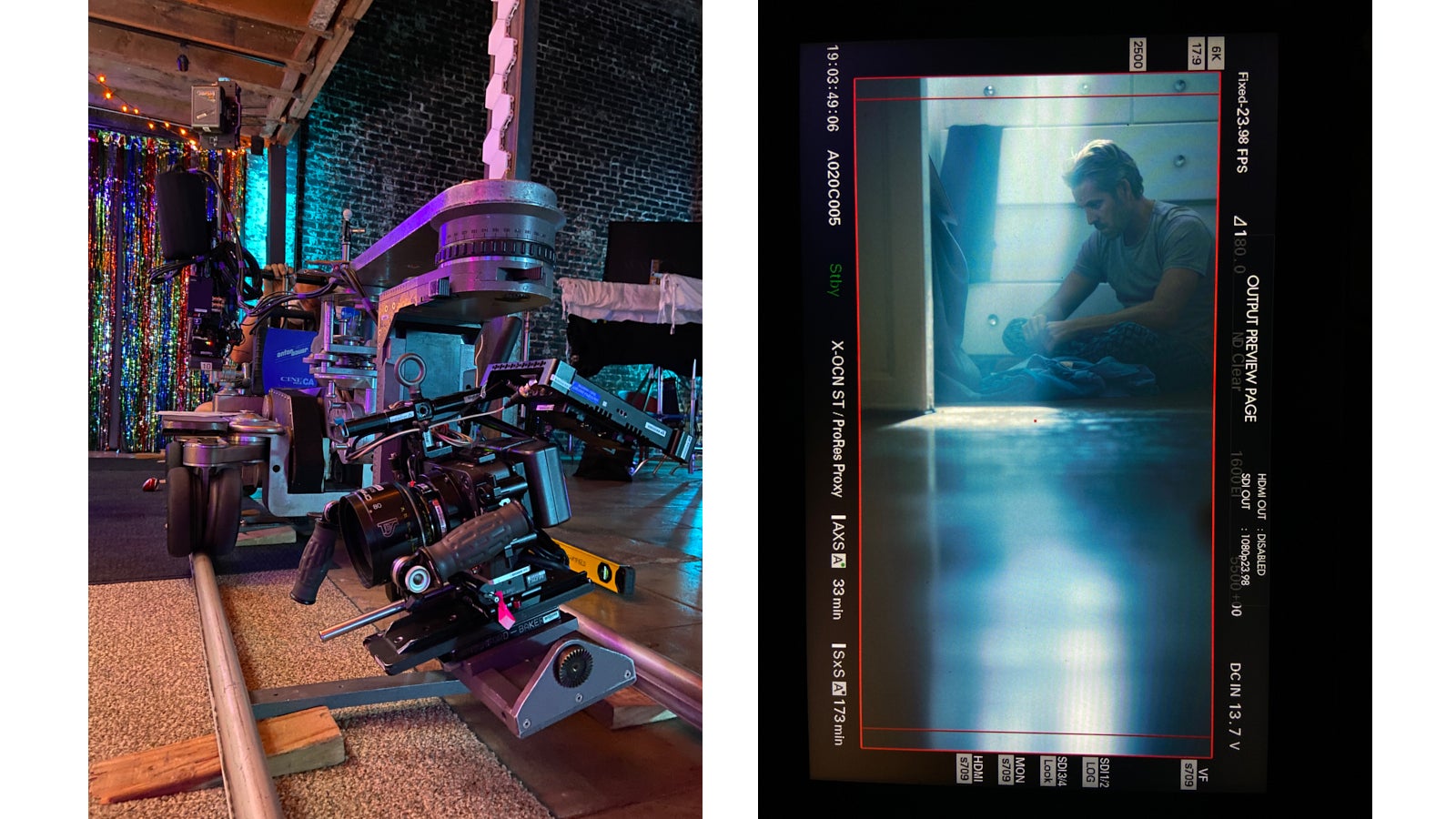
07-05-2021 - Gear, Technology
What is Dual Base ISO?
By: Alister Chapman
Dual Base ISO is a term that you have probably heard in relation to some of Sony’s Cinema Line camera, in particular the Sony VENICE and PXW-FX9. You may also have heard of Dual Base Sensitivity in relation to the ILME-FX3 and ILME-FX6. It’s a function that allows you to capture low noise and high dynamic range images equally well at both normal light levels and lower light levels. But what exactly does it mean when a camera is said to have more than one base sensitivity or base ISO?
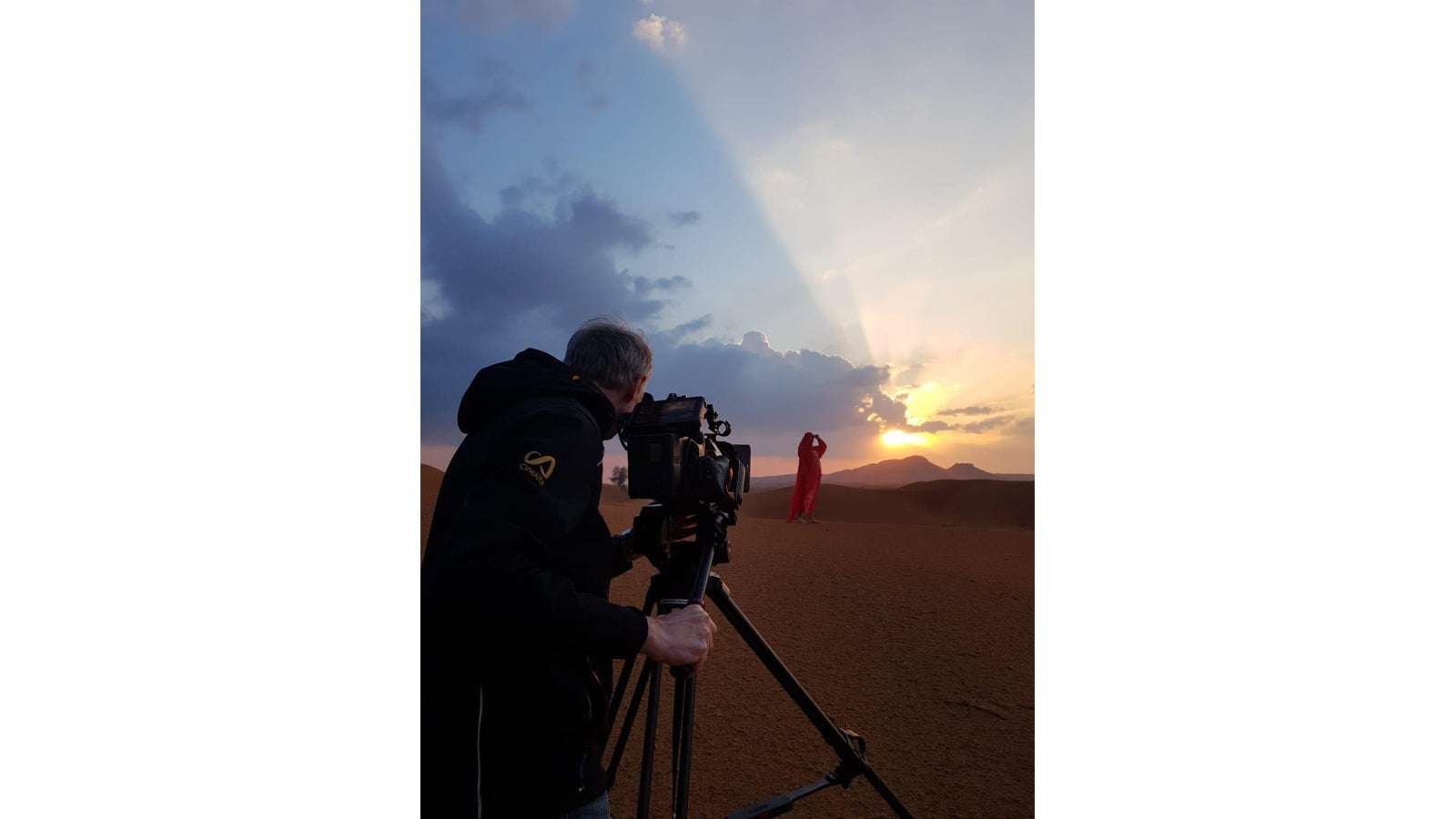
Alister using the FX9’s high base ISO to shoot in lower light levels, with very low noise and retaining the camera’s full dynamic range
Let’s start by considering what “ISO” is. For a film stock the ISO is the actual sensitivity of that film stock to light. It’s something that’s straightforward to measure. You expose the film to a known amount of light and measure how much the density of the film stock changes and from this you can derive the film’s ISO value. The density of every film stock with the same ISO value will change by the same amount when exposed to the same amount of light.
But with an electronic camera it’s much harder to determine the true sensitivity of the sensor because there are many other factors that influence how bright the output of that sensor will be. Things such as the addition of gain, the use of different gamma curves or other image processing.
A video sensor might be capable of producing images at all sorts of brightness levels depending on exactly how it has been set up. Normally these brightness changes are not due to the actual sensitivity of the sensor changing as we are not changing the sensor or the materials it is made from. Instead, these changes are the result of the addition or subtraction of gain – turning the volume up and down – if you like. And one thing about adding more gain is that not only does it amplify or increase the level of the desirable image, it also increases the amount of noise in the image.
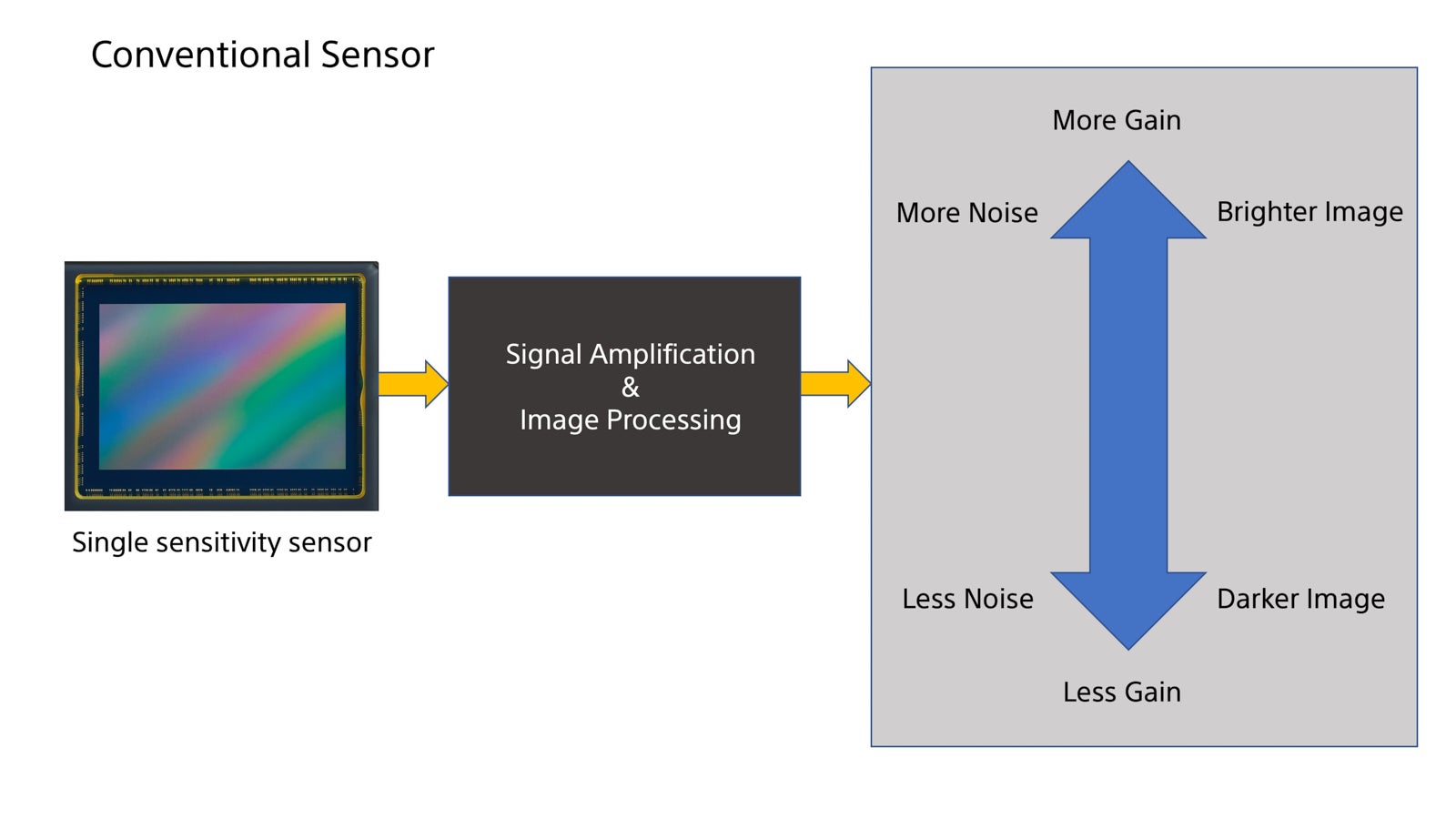
More often than not, when we talk about ISO for an electronic camera, it isn’t actually a sensitivity rating. Instead, it is an exposure rating. The difference between the two is subtle but very important. When you change between different film stocks, you are actually changing between different sensitivities of film. But when you change the ISO on a video camera, most of the time the sensitivity to light remains the same, but by changing the cameras gain or amplification you can produce a brighter or darker image for any given amount of light.
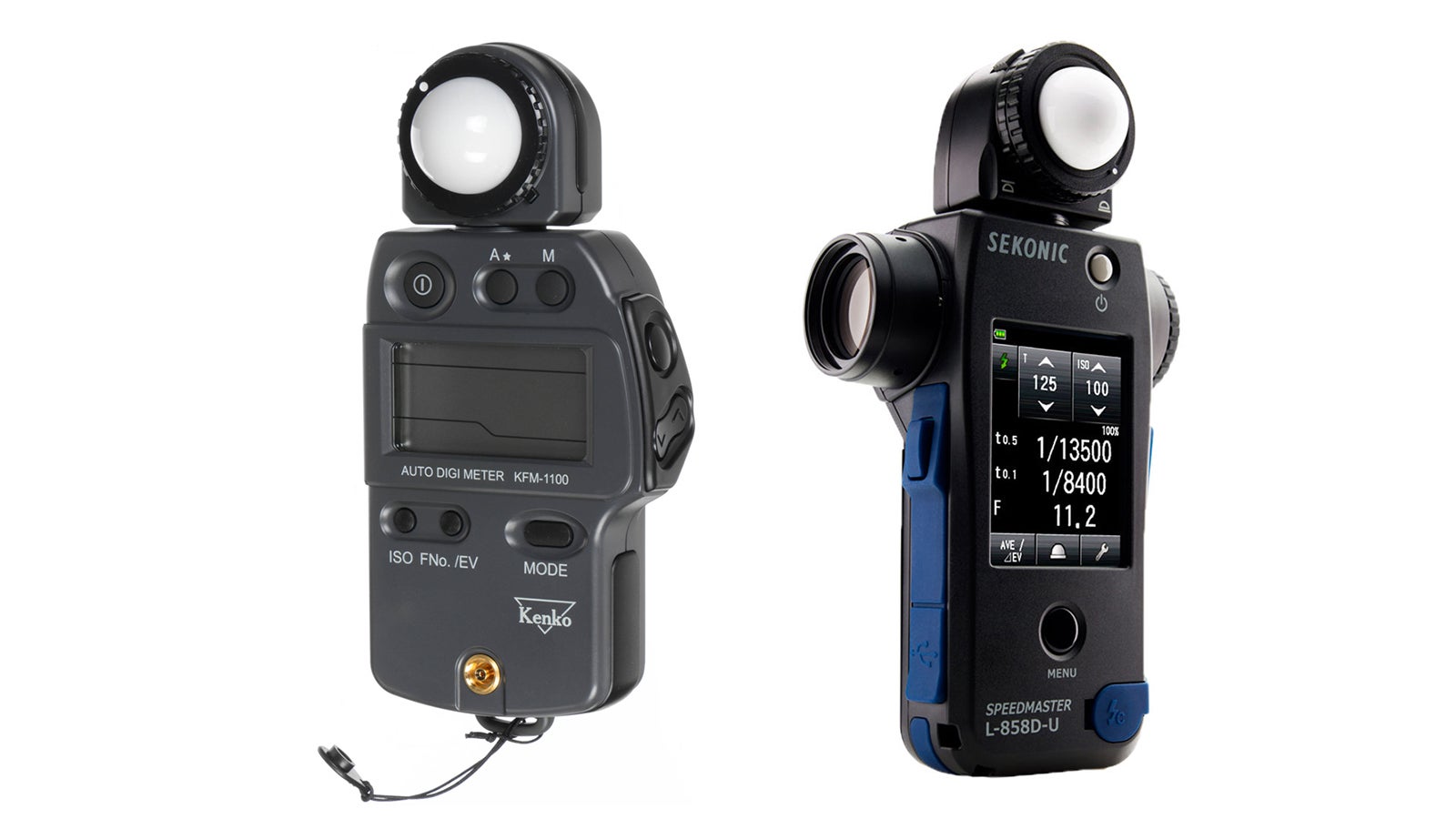
The Kenko KFM-1100 and Sekonic L-858D-U light meters
If you are using an external light meter with either a film camera or a video camera, you enter the ISO value into the meter to find the right aperture and shutter speed values for the correct exposure. The ISO value is there to get the correct brightness of image. But in the case of a video camera this value is rarely directly related to the sensitivity of the sensor. All it is, is a value that will lead to the correct on-screen brightness. It won’t tell you how much gain the camera is adding or how much noise or grain you will have as a result.
For example, if you have two video different cameras set to the same ISO, one may be adding almost no gain and have a low noise, clean image while the other may be adding large amounts of gain and have a very noisy image. Yet for both you would enter an ISO value of 800 into your light meter. But clearly these two cameras actually have very different sensitivity to light. So that ISO value isn’t a sensitivity value, it’s an exposure rating to help you get the correct brightness of image.
Why is “Base ISO” so important?
Base ISO is important because the base ISO normally represents the optimum settings for a video camera. It is normally the point where no unnecessary gain is added to the sensor’s output and it’s the level where the camera is able to record the greatest possible dynamic range. Imagine for a moment a scenario where the sensor is outputting a signal that has 15 stops of dynamic range and everything about the sensor and camera is optimized, so those 15 stops fit perfectly into the camera’s full recording range. If we were to then add some extra gain, the signal from the sensor would become larger and it would then be too large to fit into the camera’s fixed recording range, so the camera would no longer be able to record 15 stops.
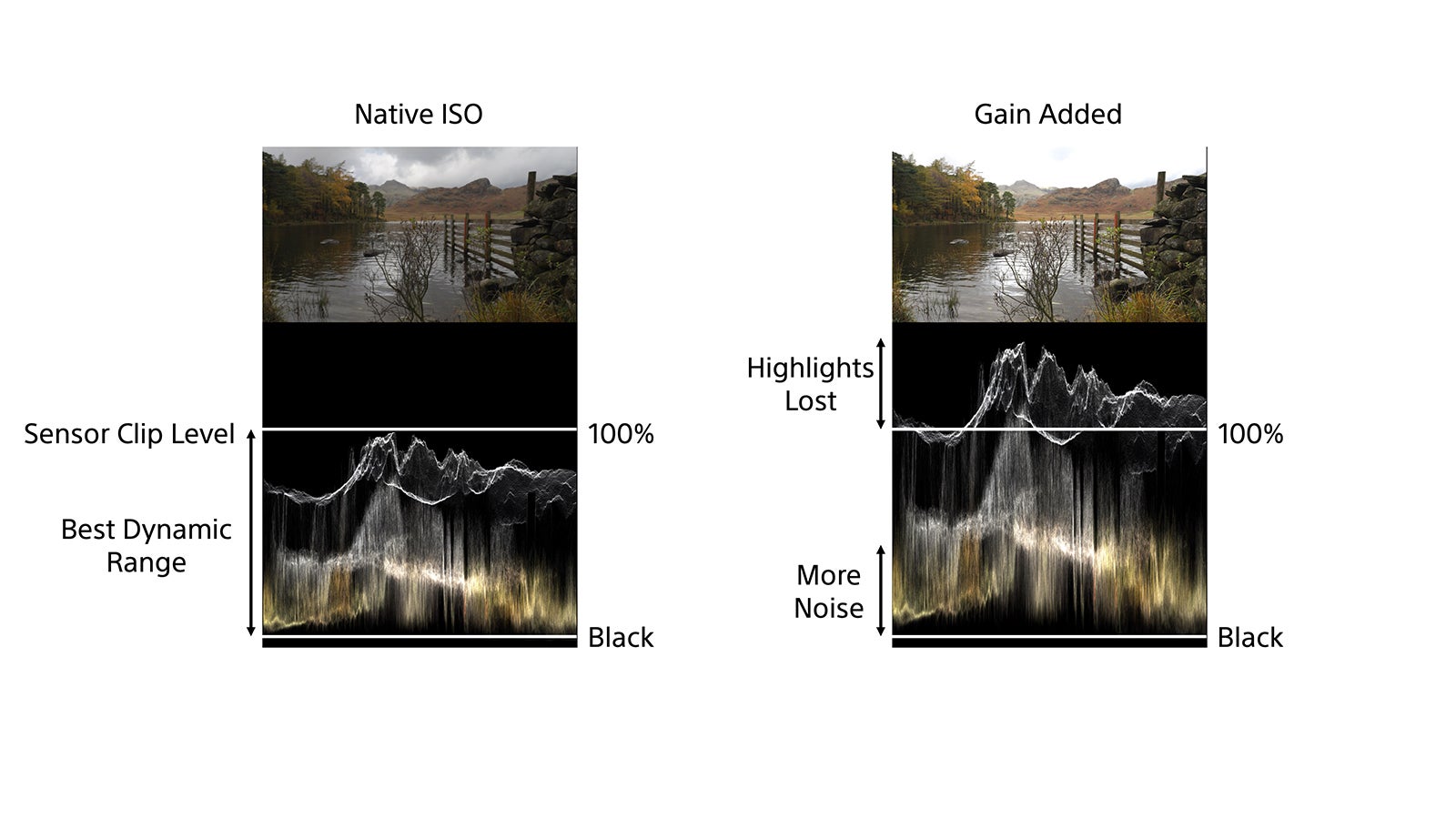
So, when you are shooting with S-Log or with raw you will almost always want to operate the camera at its base ISO in order to maximize the dynamic range that can be recorded and to record with the lowest possible amount of noise and grain.
But what if we could do some magic? What if we could find a way to have more than one base ISO? What if we could operate the sensor at two different sensitivity levels without significantly changing the noise levels or dynamic range? This is what dual ISO brings.
The Sony VENICE and FX9 cameras have a Dual Base ISO function that provides two distinctly different base sensitivity levels. The low and high sensitivity levels have almost exactly the same noise levels and both have the same dynamic range.
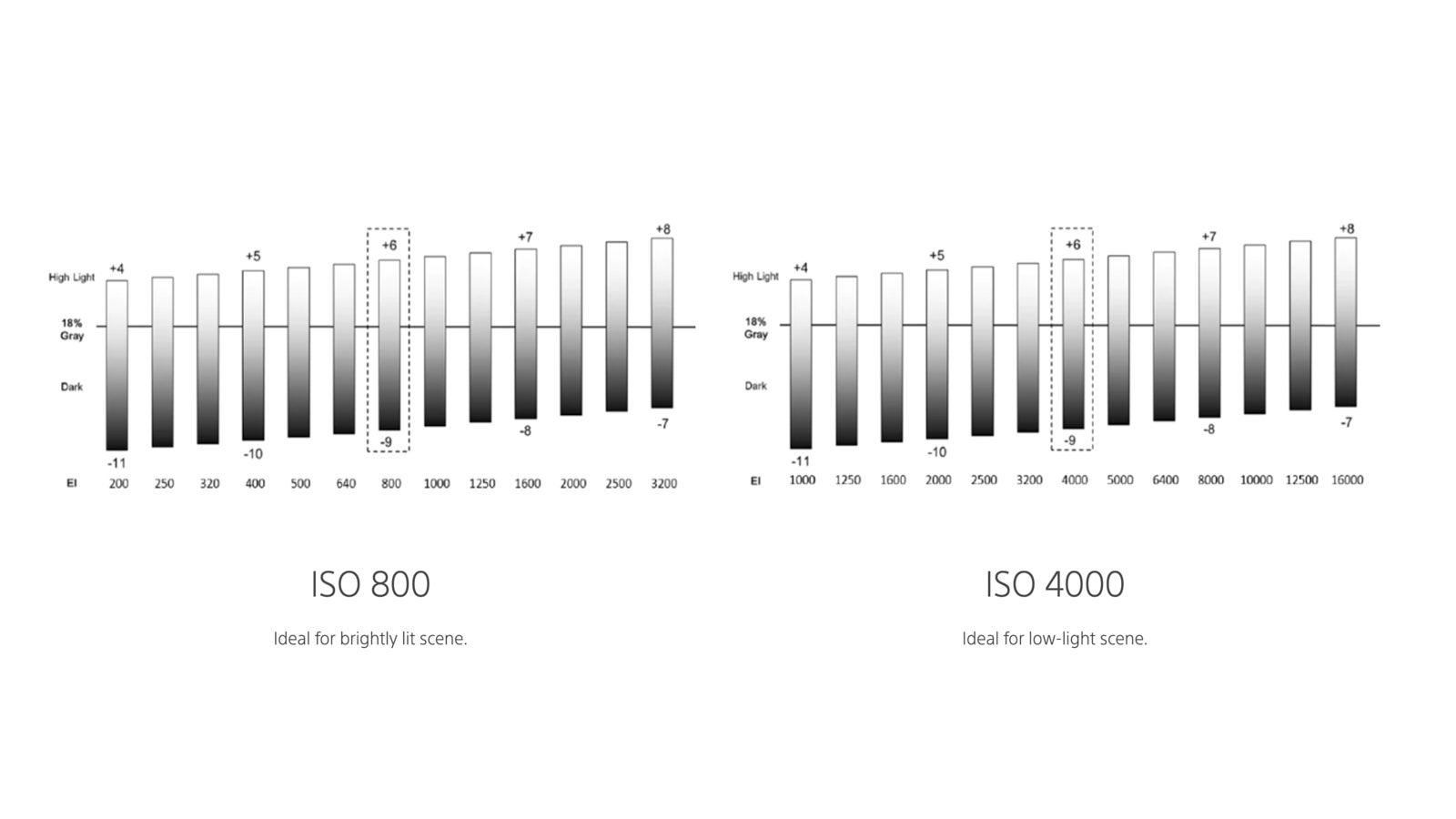
Whether shooting at Low Base 800 ISO or High Base 4000 ISO the FX9’s dynamic range remains the same. VENICE is the same but at 500/2500 ISO
The Sony FX3 and FX6 have a dual base sensitivity function that provides two very different sensitivity levels with only a very small noise and dynamic range difference between each.
Exactly how this is achieved is a closely guarded secret. From what I have been able to discover it appears that the sensors used in both VENICE and the FX9 almost certainly have a function that alters a part of each pixel called the “image well.” This stores the electrons that are released each time a photon of light hits the pixel.
For the high sensitivity mode the image well is smaller and fills faster, so less light is needed to reach a full output. In the low sensitivity mode the image well is electronically made larger so it fills more slowly and more light is needed to reach full output.
VENICE offers base ISO’s of 500 and 2,500 ISO. The FX9 in its CineEI mode has base ISO’s of 800 and 4000 ISO. To achieve similar differences between these low and high levels by adding gain in a traditional camera you would expect to see around five times more noise at the higher sensitivity level. Yet the difference in noise for both VENICE and the FX9 between Low Base ISO and High Base ISO is negligible.
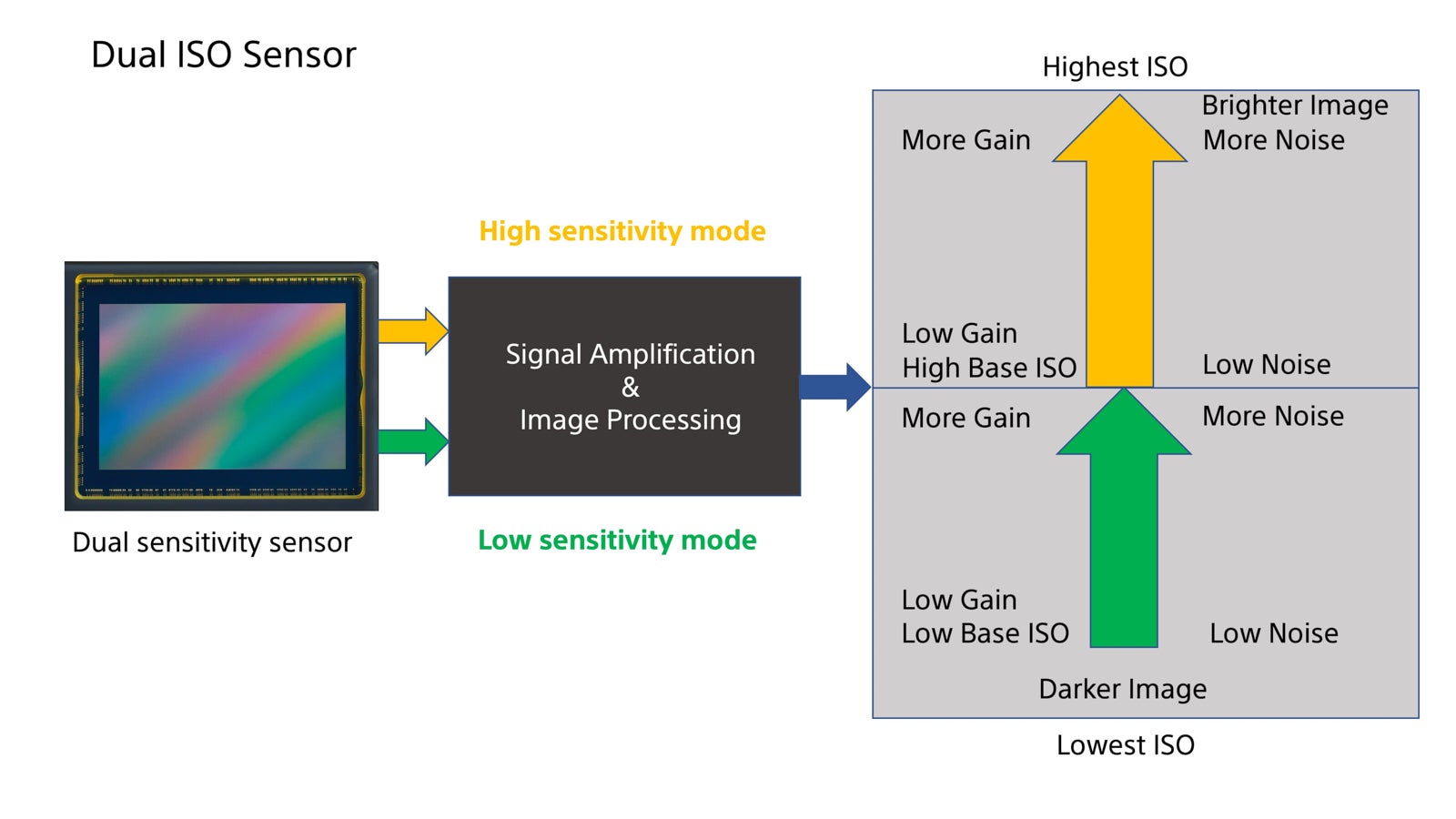
The sensors in the FX3 and FX6 probably function in a similar way, but the gap between the low sensitivity mode and high sensitivity mode on these cameras is much greater. When shooting with S-Log3 the two base ISO’s of the FX6 and FX3 are 800 and 12,800. This is a huge four stop or 16-times change in sensitivity. With these cameras there is a slightly larger difference in the noise levels between each base ISO. The little bit of extra noise in the higher sensitivity mode also fractionally reduces the dynamic range but the difference is so small it’s barely noticeable in most real world applications. To achieve this level of sensitivity difference simply by adding gain you would expect to see a 16-fold increase in the noise at the higher ISO. So, it really is quite remarkable that there is such little difference between the low and high base sensitivity modes.
The ability to switch to a more sensitive base ISO without an appreciable noise penalty greatly increases the versatility of these cameras. Now you can shoot high quality content in both bright and dark environments. It allows you to use lower overall light levels if you chose.
My own experience with these cameras has shown that rather than adding more than +6dB of gain or using an ISO that is more than double the base ISO, you will get better results by moving up to the camera’s high base sensitivity mode. As an example, if shooting S-Log3 with an FX3 there will be less noise if you shoot at 12,800 ISO than if you shoot at 10,000 ISO. If you are using an FX6, FX9 or VENICE and you find that using the high base sensitivity mode makes the camera too sensitive, then you can make use of the built-in ND filters to achieve a lower equivalent ISO. For example, 12,800 ISO + 1/4 ND (-2 stops) will give you the equivalent of 3200 ISO.
One final consideration for the FX3, FX6 and FX9 is that the base ISO or base sensitivity is also affected by the gamma curve you have chosen. The most commonly listed base sensitivities given are for S-Log3. But when using other gamma curves the base sensitivity will be different. Also it’s worth noting that if you use the camera in gain mode rather than ISO mode that 0dB gain will always be the base sensitivity. So if you can’t remember what the base ISO sensitivity for a particular gamma curve is, consider using gain and 0dB instead.
